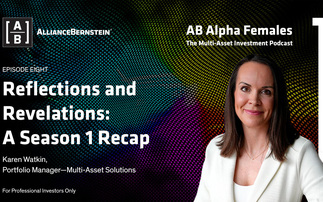As we move into the second quarter of the year, the price action in global markets has continued to outpace the economic data, and the US stock market has again reached all-time highs. Technology is back leading the pack as it did for much of 2018, and with volatility declining for a fourth straight month, its longest period since 2014, investors are wondering: are we back at the races once again?
The divergence between strong markets and economic data is bound to narrow eventually, and the question is whether this will come from a moderation in market performance, or an uptick in global growth prospects. We haven't fundamentally changed our view that markets are getting ahead of themselves, and believe key indicators for the direction from here may be in the corporate sector.
After rather downbeat analyst forecasts of a 3.9% decline in earnings for Q1, this earnings season is off to a decent start as companies ‘beat' earnings expectations that have been reset lower. We are rather sanguine about what this means in the round. With the five-year average of actual earnings outperforming estimates at 4.8% per quarter, we shouldn't interpret this to mean, in aggregate, that the corporate sector is in good health. Company management ultimately hold the purse strings, and the level of capex and discretionary corporate spending - advertising and the like - is their prerogative.
The CFO magazine Global Business Outlook is a quarterly survey run by Duke's Fuqua School of Business, and it is pointing to some potentially troubling signs ahead. In the most recent survey published in early April, 84% of CFOs from 469 US firms anticipate the US economy will enter recession by Q1 2021, 67% believe a recession will begin by Q3 2020, and 38% are even more pessimistic and see recession by Q1 2020.
While these forecasts may or may not hold true, it is important to recognise that these beliefs will undoubtedly impact corporate decision making. If CFOs are expecting a recession, will they approve new investment in plant or equipment? Or will they start cutting capital expenditures in order to protect their balance sheets from an impending downturn? These questions can be even more pressing for highly geared companies that are vulnerable to rating agency downgrades, especially as a record number of US companies considered ‘investment grade' are BBB-rated - just one notch above ‘junk' bonds.
While we have seen some beginnings of stabilisation in global growth, the outlook for the US economy is less positive, and it may be beginning to ‘catch down' to the rest of the world. This would negatively impact the corporate sector, but if the economic data does get better the Fed may once again shift to tightening, and with cuts rather than hikes priced in the market response could be quite negative.
In terms of positioning in this environment, we remain somewhat cautious as the barrier to entry for adding to risk is high given the good news already priced into the market. As real rates came down in March we took some profits in our gold equity positions, and added to a manager that is positioned to perform well if there is a pickup in market volatility. Gold has performed very well since summer 2018 but peaked at the end of February, and while we have trimmed our exposure, we continue to see the precious metal as a strategic hedge against a downturn in asset markets.
As the saying goes, bull markets die of euphoria not old age, and as we see another all-time high without the economic conditions one would normally associate with such a peak, we maintain a healthy level of scepticism about what the future might hold.
|
31/03/2014 - 31/03/2015 |
31/03/2015 - 31/03/2016 |
31/03/2016 - 31/03/2017 |
31/03/2017 - 31/03/2018 |
31/03/2018 - 31/03/2019 |
|
|
S&P 500 |
12.7% |
1.8% |
17.2% |
14.0% |
9.5% |
Source: Bloomberg, Fidelity International, 31 March 2019.
Important information
This information is for investment professionals only and should not be relied upon by private investors. The value of investments and the income from them can go down as well as up and clients may get back less than they invest. Past performance is not a reliable indicator of future returns. Investors should note that the views expressed may no longer be current and may have already been acted upon. These funds use financial derivative instruments for investment purposes, which may expose the funds to a higher degree of risk and can cause investments to experience larger than average price fluctuations. These funds invest in overseas markets and so the value of investments can be affected by changes in currency exchange rates. There is a risk that the issuers of bonds may not be able to repay the money they have borrowed or make interest payments. When interest rates rise, bonds may fall in value. Rising interest rates may. Reference to specific securities should not be construed as a recommendation to buy or sell these securities and is included for the purposes of illustration only. Issued by Financial Administration Services Limited, authorised and regulated by the Financial Conduct Authority. Fidelity, Fidelity International, the Fidelity International logo and F symbol are trademarks of FIL Limited.











